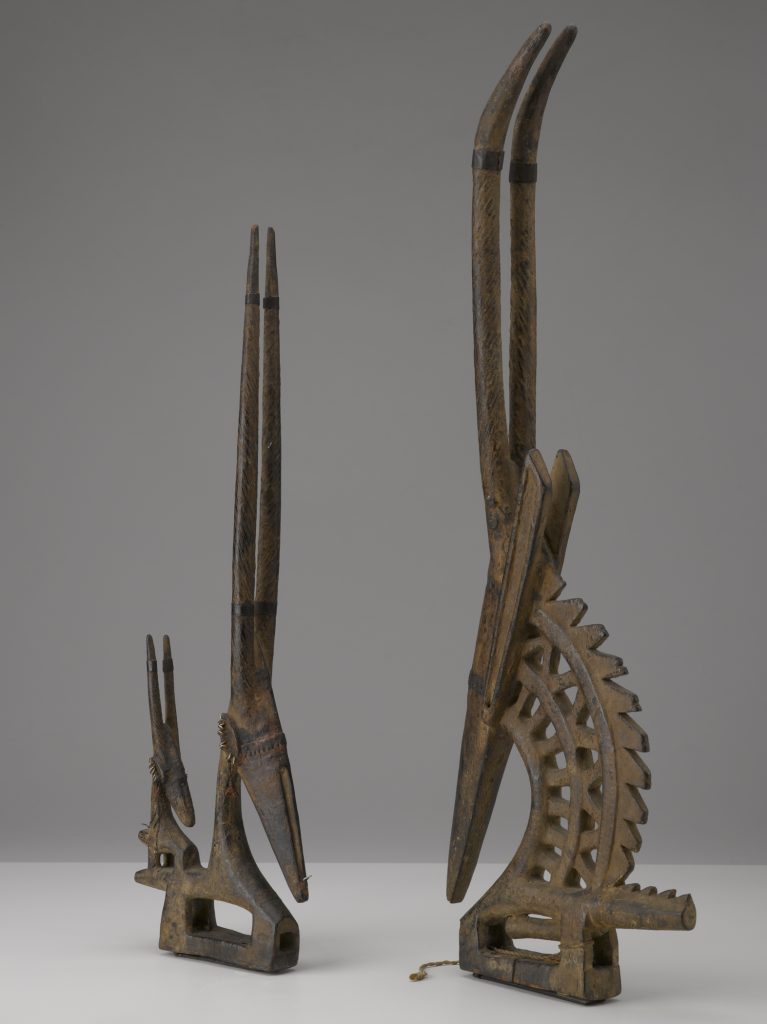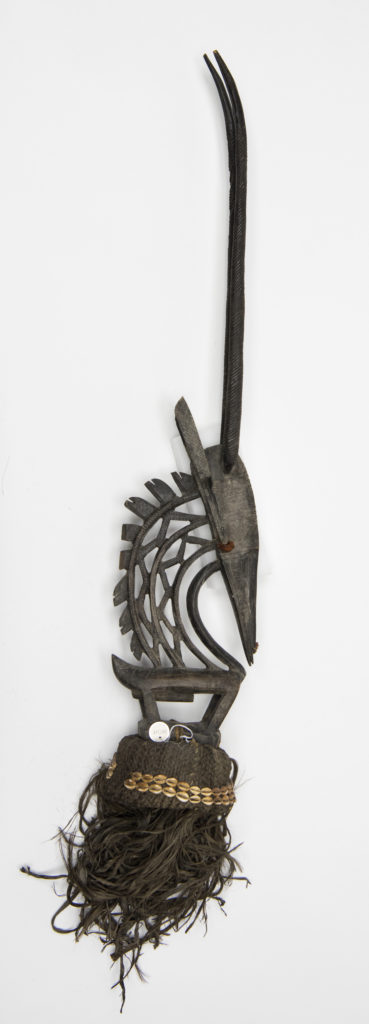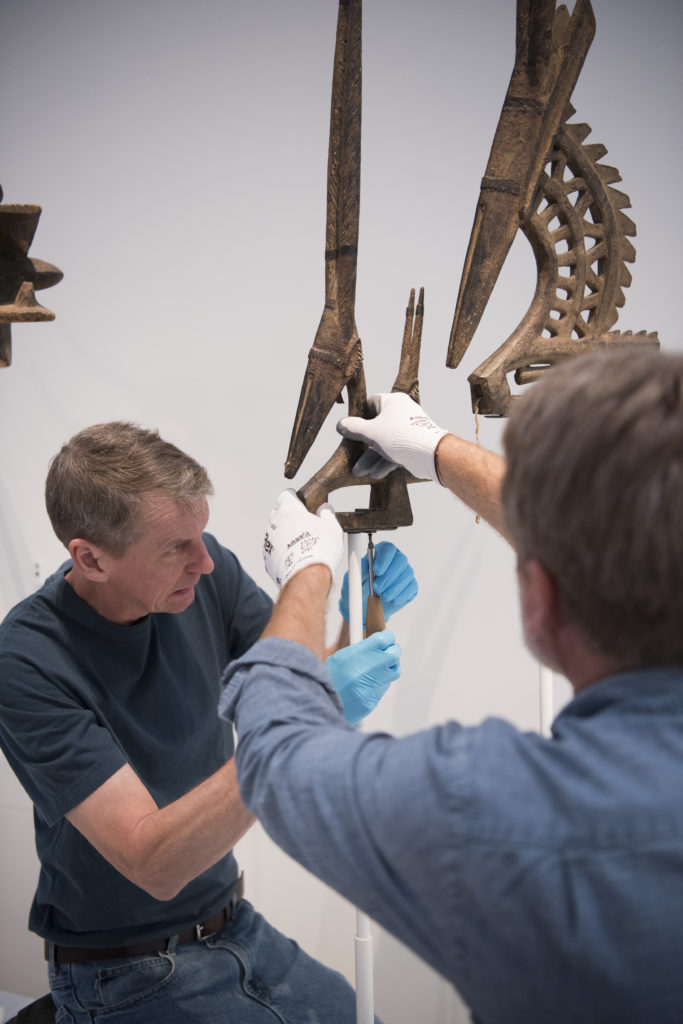Máscaras de cresta (ciwaraw kun) (obra de arte)
Información sobre la obra de arte
Ideas clave sobre esta obra de arte
- Ci-wara (chih-wa-rah) crest masks represent composite or hybrid mythical beings, combining characteristics from antelopes, aardvarks, pangolins, and humans. They often dance in pairs and are worn on top of the head. This pair combines the elegant head of the oryx, an antelope native to Africa, with the stout body of the aardvark.
- The mother-and-child ci-wara is smooth in texture, while the male is more elaborate, with geometric cutouts. The female headdress with its jewelry and baby ci-wara on its back may depict ideal Bamana motherhood.
- Ci-wara performance establishes norms of agricultural labor, entertains the community, and wields spiritual and ritual power. Pairing male and female masks promotes the cooperation needed for married life and farming.
- Ci-wara crest masks are made and performed by men so that the women can interact during the performance. The women imitate and interrupt the male dancers to request new jobs or social roles, or to add to the entertainment. This gives women an active role in the performance.
- Ci-wara enseñó a los humanos las técnicas agrícolas y el cultivo del grano. Esta conexión con la agricultura ha creado una competencia amistosa entre las comunidades vecinas, tanto en la danza como en la agricultura.
- Both of the crest masks are fragments. They represent only the heads of full-bodied ensembles. The variety of movements, gestures, and dynamic theatrical antics are missing from their current museum form.
Más información
Bamana peoples honor Ci-wara as the spirit who taught their ancestors how to till the earth and grow crops. At traditional planting and harvest festivals, the most successful farmers are chosen to dance in honor of Ci-wara. The Bamana crest masks represent male and female antelopes, which also symbolize the creative forces of nature and the cooperation necessary for successful farming. The masks are attached to woven caps by which they can be secured to the heads of the male dancers. Their bodies are covered with long, thick raffia costumes that sound like rain falling when they dance. While the costumed men leap in imitation of an antelope, the women dance alongside them, singing praises to the ideal farmer, who exhibits the grace, strength, and endurance of an antelope. Two long sticks held by each dancer represent the rays of the sun.
The decorative patterns that are carved into the sculptures emphasize the antelope’s essential qualities: a narrow head, gracefully arching neck, and long horns. The zigzag design of the male’s neck and mane represents the path of a running antelope; the tall horns suggest waving stalks of grain. Human characteristics are also incorporated into the portrayal of the female antelope, who wears earrings and a nose ring and carries her baby on her back. In addition to their antelope features, the masks include the lower body of the aardvark, a type of anteater that burrows in the soil. The aardvark represents the farmers who cultivate the earth.
tags: función, simbolismo, animales, comunidad, celebración, ceremonia
Recursos adicionales
Recursos adicionales
Recursos para los profesores:
- Read an article about ci-wara masquerade.
- Conozca la leyenda de Ci-wara.
Recursos para los estudiantes:
- Vea un vídeo sobre la ceremonia del baile de máscaras.
- Read an article about ci-wara.
- Examine another ci-wara mask from the Metropolitan Museum of Art.




